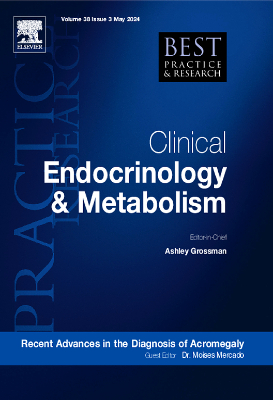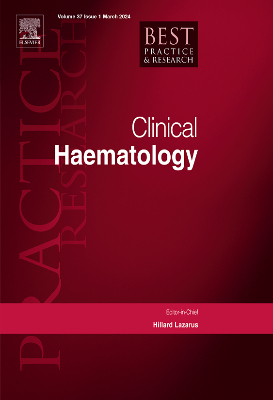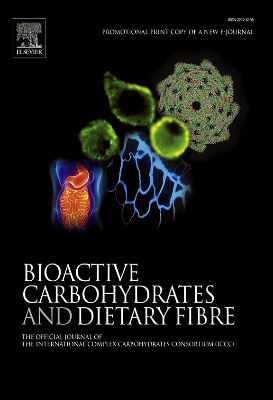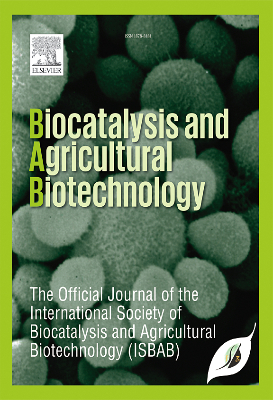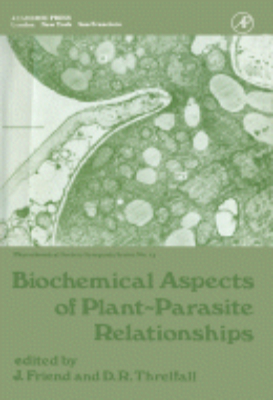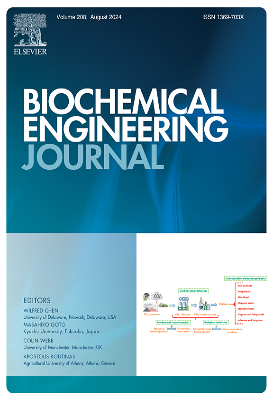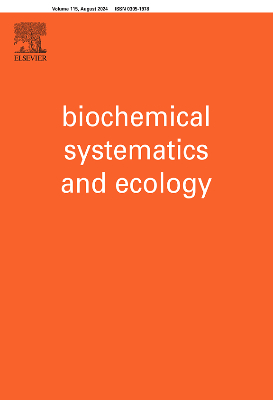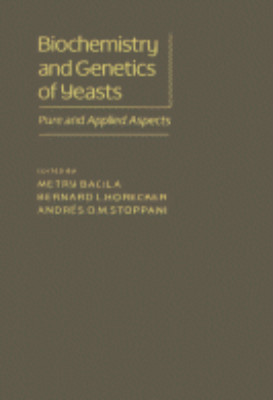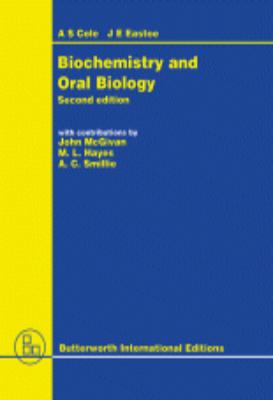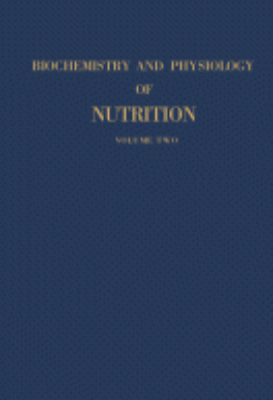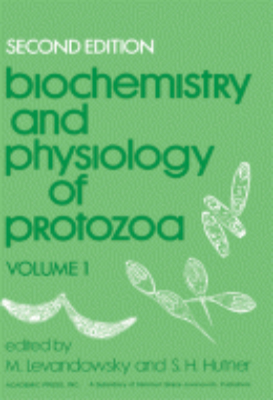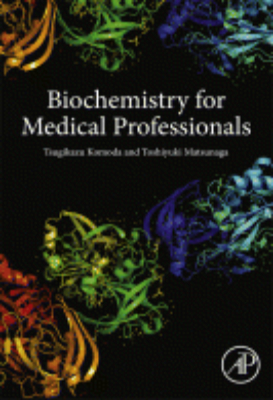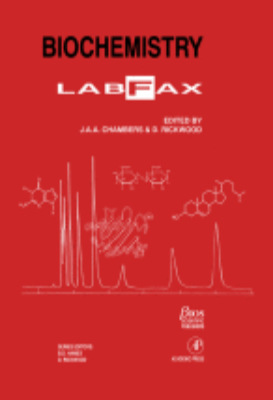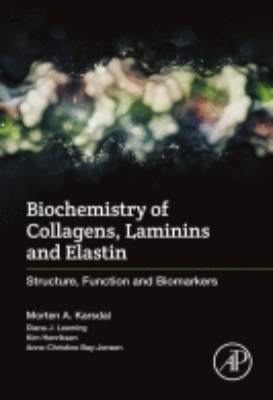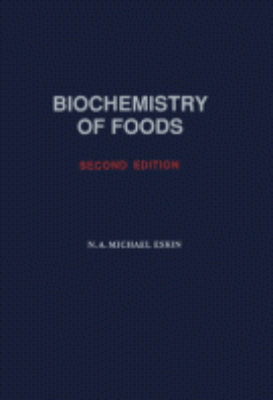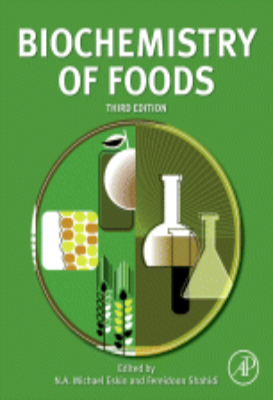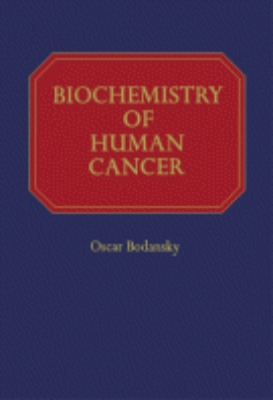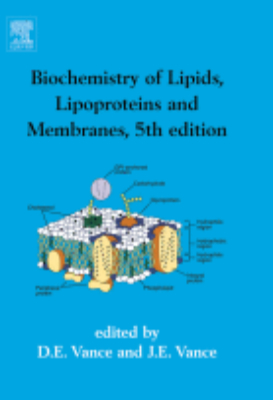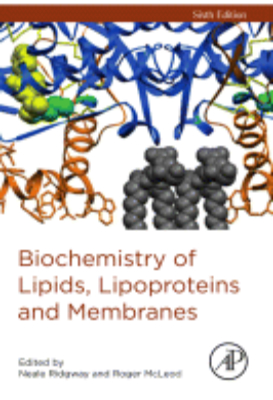E-Resources
Bioavailability of Nutrients for Animals
This practical book provides crucial information necessary to formulate diets with appropriate amounts of amino acids, minerals, and vitamins. The factors that influence how well animals obtain these critical nutrients and methods for determining bioavailability are reviewed in this comprehensive text. In addition, data from both ruminants and nonruminants are included as well as established estimates of bioavailability for particular feed stuffs and feed supplements.
Biochemical Aspects of Plant – Parasite Relationships
Biochemical Aspects of Plant-Parasite Relationships is a collection of papers from the Phytochemical Society Symposium of the same subject held at Hull in April 1975. This collection discusses biochemical research on the mechanisms involved in the invasion of plants by pathogens, the production of disease symptoms, and the mechanisms occurring in plant resistance against the invading microorganisms. Some papers discuss the genetics of fungal-plant interactions and the structural features of both infection and resistance processes, Such genetic interactions and structural features point to a biochemical reason for the plant-parasite interaction. Several attempts to correlate production of a cell wall degrading enzyme in vitro by a pathogen's virulence have shown great differences between in vitro and in vivo environments. One paper cites as an example the pathogens which produce both pectic hydrolases and lyases: the type of enzyme that is found to predominate often is actually associated with the pH of the environment. One paper also investigates nucleic acid transfer and the possible role of RNA in the host-parasite specificity. This collection can prove beneficial for microbiologists, biochemists, biotechnologists, plant biologists, and academicians connected with the biological sciences.
Biochemistry and Genetics of Yeast
Biochemistry and Genetics of Yeasts: Pure and Applied Aspects consists of papers presented at a symposium organized by the Academia Brasileira de Ciencias held at the Universidade de Sao Paulo, on December 4-10, 1977. Organized into seven parts, this book reveals relevant and exciting developments in the areas of yeast genetics, respiration and fermentation, metabolic regulation, cell wall structure, synthesis of macromolecules, and transport. It demonstrates the presence of great progress in the knowledge of structure and functions of the yeast mitochondrial DNA. This book will be useful to scientific institutes and university laboratories interested in the biochemistry, genetics, and technology of yeasts.
Biochemistry and Molecular Biology of Parasites
The study of parasitic organisms at the molecular level has yielded fascinating new insights of great medical, social, and economical importance, and has pointed the way for the treatment and prevention of the diseases they cause.Biochemistry and Molecular Biology of Parasitespresents an up-to-date account of this modern scientific discipline in a manner that allows and encourages the reader to place the biochemistry and molecular biology of these organisms in their biological context. The chapters are cross-referenced and grouped in an arrangement that provides a fully integrated whole, and permits the reader to create a composite of the biochemical function of these organisms.Individual chapter includes those devoted to metabolism, in both aerobic and anaerobic protozoa; antioxidant mechanisms; parasite surfaces; organelles; invasion mechanisms; and chemotherapy. The helminths are discussed not only from the point of view of their cellular biochemistry and metabolism, but also with respect to both their integrated functions such as neurochemistry, structure and functions of surfaces, and reproduction. Written by expert investigators, this book will be of interest to all experienced researchers, graduate students, and to the newcomer eager to become familiar with the biochemistry and molecular biology of parasites.
Biochemistry and Oral Biology
Biochemistry and Oral Biology presents a unique exposition of biochemistry suitable for dental students. It discusses the structural basis of metabolism and the general principles of nutrition. It addresses the soft tissues, hard tissues, and the biology of the mouth. Some of the topics covered in the book are the free radical production; scope of biochemistry; characteristics of atoms; structure and properties of water; molecular building materials; ionization of proteins; affinity chromatography of proteins; structural organization of globular proteins; classification of enzymes; and biochemically important sugar derivatives. The naturally occurring fatty acids are fully covered. The nucleic acid components are discussed in detail. The text describes in depth the energy equivalents of different nutrients. The physiological effects of dietary fiber vitamin D deficiency are completely presented. A chapter is devoted to the alternative methods of fluoride administration and description of vitamins. The book can provide useful information to dental students, and researchers.
Biochemistry and Physiology of Nutrition
Biochemistry and Physiology of Nutrition, Volume II focuses on the processes, methods, and studies on nutrition. The book starts by discussing intracellular localization through histochemical methods of enzymes and vitamins; the structural changes in vitamin deficiency; and microbiology of digestion. Deficiencies in vitamins, A, C, D, E, B1, riboflavin, nicotinic acid, choline, biotin, and folic acid are noted. The book then focuses on microbiology of digestion, considering the establishment of microbial population in the alimentary tract, results of microbial digestion, antibiotics, and intestinal flora of man. The text also defines the nutrition system of worms, insects, and protozoa. The generation of ATP in terminal respiration and anaerobic glycolysis, as well as ATP's role in energy transfer, is noted. The discussions also focus on hydrolytic and phosphorylitic enzymes, such as carbohydrates, esterases, amidases, phosphatases, and phosporylases. Other topics covered are respiratory enzymes and coenzymes in which nucleotides, glucose diphosphate, diphosphoglyceric acid, and thiamine pyrophosphate are noted. The book notes the functions of iron compounds in the body, particularly in blood and tissues, and then touches on calcium and phosphorus metabolism. Given considerations are calcium and phosphorus in blood, skeletal calcium and phosphorus, and the factors affecting adsorption. A discussion also focuses on trace elements and the effects of protein, carbohydrates, fats, and vitamins in nutrition. The book is a vital source of data for readers interested in studying the elements, factors, processes, and methods involved in nutrition.
Biochemistry and Physiology of Plant Immunity
Biochemistry and Physiology of Plant Immunity details the physiological properties of plant immunity from a biochemical perspective. The book provides a summary and concise explanation of the various studies conducted on the field of biochemistry and physiology of plant immunity. The text first details the evolution of parasitism, and then proceeds to discussing the biochemistry and physiology of heterotrophic micro-organisms. Next, the selection talks about the biochemistry and physiology of diseased plant, before it finally deals with plant immunity. The book will be of great use to researchers and practitioners of disciplines that deal with the health of vegetation, such as botany and horticulture.
Biochemistry and Physiology of Protozoa
Biochemistry and Physiology of Protozoa, Second Edition, Volume 1 is organized into 13 chapters, beginning with a discussion on fine structure and phytogeny of phytoflagellates. This book discusses the structural features of protozoan cytochromes. Subsequent chapters explain sterol and carotenoid distributions in various groups, phycobiliproteins in cryptomonads, halotolerance in Dunaliella, physiology of coccolithophorids, the ameboflagellates, and bioluminescence of phytoflagellates. This edition also describes the most severe and best known of the toxins, saxitoxin, produced by species of Gonyaulax. Lastly, the physiological ecology of red tide flagellates is explained.
Biochemistry for Medical Professionals
Biochemistry for Medical Professionals contains pivotal advances in the biochemistry field and provides a resource for professionals across medicine, dentistry, pharmaceutical sciences and health professions who need a concise, topical biochemistry reference. Relevant, well-illustrated coverage begins with the composition of the human body and then goes into the technical detail of the metabolism of the human body and biochemistry of internal organs before featuring a biotechnology study inclusive of numerous methods and applications. The work is written at a consistently high level, with technical notes added to aid comprehension for complex topics.
Biochemistry LabFax
LABFAX volumes are purpose-designed data reference books for practising scientists. Each book presents key information for a major subject in one place and so saves hours of searching. It does not simply collect together data which are already available in catalogues since these are often incomplete and can contain conflicting information. Rather, the authors and editors of each LABFAX volume have searched the original literature for the accurate data which they know the specialist needs.Biochemistry LabFax is a detailed compendium of essential information - on radioisotopes, enzymes, proteins, nucleic acids, lipids, plus data on selected techniques such as chromatography, electrophoresis, etc. - needed on an almost daily basis by researchers in any area of biochemistry. In addition, the book acts as a gateway to other sources for information more specific than can be covered in a volume of this size.
Biochemistry of Brain
Biochemistry of Brain is a collection of articles dealing with the developments in the biochemistry of the brain. This book gives a comprehensive and critical discussion of important developments in studies concerning the above subject. This text discusses the structure, function, and metabolism of glycosphingolipids, which are related to the study of sphingolipid storage diseases. Inborn defects of metabolism are found in Gaucher's and Fabry's disease, which are characterized by lipid accumulation in the brain. Another paper reviews the chemical and genetics of critically lysosomal hydrolase deficiencies that can cause the storage of sphingolipids. This book then explains the role of myelin basic protein in lipids in vivo that the weak bonding of the protein is not a major component of myelin stability. Another paper discusses the procedures for isolating subfractions of myelin and myelin-related membranes, with some attention given on the alterations in the subfractionation of myelin in pathological hypomyelinating and demyelinating conditions. Another article discusses the biochemical and enzymatic composition of lysosomes and the biosynthesis, intracellular transport, storage, and the degradation of lysosomal constituents. This collection of papers will benefit scientists doing research in microbiology, microchemistry, molecular genetics, and neurochemistry.
Biochemistry of Cancer
Biochemistry of Cancer focuses on cancer research, including induction, chemical composition, and growth of tumors and chemotherapy. The book first offers information on the general phenomena and taxonomy of cancer. Discussions focus on the transmissibility of tumors and experimental basis of cancer research; cancerous transformation of animal tissues in vitro; growth and the vascular reactions of tumors; and classification of animal tumors. The text also ponders on the extrinsic factors in the induction of tumors, including comparative carcinogenicity of hydrocarbons, metabolic fate of injected hydrocarbons, dosage and response to carcinogenic hydrocarbons, and polycyclic hydrocarbons. The manuscript takes a look at the intrinsic factors in the induction of tumors. Topics include influence of sex hormones on carcinogenesis of sex and accessory sex tissues; viruses as causative agents for fowl tumors and rabbit papillomas; and possibility of relatively non-specific endogenous carcinogens. The publication also elaborates on attempts to control tumor induction and growth and the chemistry of tumors. The book is a vital reference for readers interested in the biochemistry of cancer.
Biochemistry of Characterised Neurons
Biochemistry of Characterised Neurons provides a report on the progress made in the analysis of the biology of specific neurons in the central nervous system. This book emphasizes the biochemical, morphological, and functional aspects of characterized neurons, including ways and sophisticated techniques of isolating them. This publication is divided into 11 chapters. The first chapter evaluates the relevance of working with single neurons. Chapters 2 to 6 discuss specific, characterized, invertebrate neurons containing one of the putative neurotransmitter substances. Chapter 7 deals with the biochemistry of a unique vertebrate (Torpedo) cholinergic system that enables pure cholinergic neuronal cell bodies and endings to be analyzed separately. The sensitive radiochemical procedures used to analyze transmitter substances and transmitter enzymes, and how they can be adapted to map the distribution of transmitters in individual neurons of Aplysia, are discussed in Chapter 8. Chapter 9 describes methods for the analysis of specific cells in the retina, while Chapters 10 and 11 focus on the analysis of proteins within defined neurons. This text is beneficial to biochemists and students interested in analyzing neurons.
Biochemistry of Collagens Laminins and Elastin
"Biochemistry of Collagens, Laminins, and Elastin: Structure, Function, and Biomarkers provides a comprehensive introduction to collagen and structural proteins. Type I collagen is one of the most abundant molecules in the body, playing essential roles in different tissues, particularly bone and skin. A key aspect of type I collagen is its post-translational modifications which are essential for correct synthesis and structural integrity of collagens, for tissue-specific functionality, as well as for application as biomarkers of different pathologies. This volume summarizes current data on key structural proteins (collagens, laminins and elastin), reviews how these molecules affect pathologies, and describes selected modifications of proteins that result in altered signaling properties of the original extracellular matrix component. Further, it discusses the novel concept that an increasing number of components of the ECM harbor cryptic signaling functions that may be viewed as endocrine functions. Additionally, it highlights how this knowledge can be exploited to modulate fibrotic disease. Key Features. Provides a comprehensive introduction to collagen and structural proteins. Provides insight into emerging analytical technologies that can detect biomarkers of extracellular matrix degradation. Includes a chapter dedicated to the biomarkers of structural proteins. Contains insights into the biochemical interactions and changes to structural composition of proteins in disease states"
Biochemistry of Foods: 1971
Biochemistry of Foods attempts to emphasize the importance of biochemistry in the rapidly developing field of food science, and to provide a deeper understanding of those chemical changes occurring in foods. The development of acceptable fruits and vegetables on postharvest storage is dependent on critical biochemical transformations taking place within the plant organ. The chapters discuss how meat and fish similarly undergo postmortem chemical changes which affect their consumer acceptability. In addition to natural changes, those induced by processing or mechanical injury affect the quality of foods. Such changes can be controlled through an understanding of the chemical reactions involved, for instance, in enzymic and nonenzymic browning. Increased sophistication in food production has resulted in the widespread use of enzymes in food-processing operations. Some of the more important enzymes are discussed, with an emphasis on their role in the food industry. The final chapter is concerned with the biodeterioration of foods. The various microorganisms involved in the degradation of proteins, carbohydrates, oils, and fats are discussed, with special reference to the individual biochemical reactions responsible for food deterioration.
Biochemistry of Foods: Third Edition 2013
"This bestselling reference bridges the gap between the introductory and highly specialized books dealing with aspects of food biochemistry for undergraduate and graduate students, researchers, and professionals in the fi elds of food science, horticulture, animal science, dairy science and cereal chemistry. Now fully revised and updated, with contributing authors from around the world, the third edition of Biochemistry of Foods once again presents the most current science available. The first section addresses the biochemical changes involved in the development of raw foods such as cereals, legumes, fruits and vegetables, milk, and eggs. Section II reviews the processing of foods such as brewing, cheese and yogurt, oilseed processing as well as the role of non-enzymatic browning. Section III on spoilage includes a comprehensive review of enzymatic browning, lipid oxidation and milk off-flavors. The final section covers the new and rapidly expanding area of rDNA technologies. This book provides transitional coverage that moves the reader from concept to application. Key Features. Features new chapters on rDNA technologies, legumes, eggs, oilseed processing and fat modification, and lipid oxidation. Offers expanded and updated material throughout, including valuable illustrations. Edited and authored by award-winning scientists"
Biochemistry of Human Cancer
Biochemistry of Human Cancer focuses on advances in the application of biochemistry to the study of human cancers, such as neoplastic immunoglobulinopathies, cancer of the bladder, tumors of the neural crest, leukemias and lymphomas, and neoplasms of the bone. It also examines certain features of human cancer ranging from general metabolic characteristics to enzymic aspects and immunochemical considerations. Organized into 18 chapters, this book begins with an overview of the general metabolic features of cancer, with emphasis on the metabolism of lipids, proteins, and carbohydrates. It then discusses the important biochemical aspects of pulmonary and prostatic neoplasms, including the serum acid and alkaline phosphatase activities of prostatic carcinoma. The remaining chapters look at the role of enzymes and immunoglobulins in cancer, the tryptophan metabolism in cancer of the bladder and the carcinoid syndrome, the link between amino acid metabolism and tumors of the neural crest, and the neoplasms of the digestive tract and the accessory organs (pancreas and liver). The book explains the metabolism of purines and pyrimidines in cancer, hypercalcemia in neoplastic disease without evidence of bone metastases, and neoplasms of other organs, such as the pituitary gland, thyroid, testis, and adrenal cortex. Brief case reports from the literature are included to illustrate correlations between biochemical and clinical findings. Scientists, biochemists, and clinical investigators concerned with the biochemistry of human cancer will find this book highly informative.
Biochemistry of Insects
Biochemistry of Insects reviews the state of knowledge in insect biochemistry. The book begins by examining the function of carbohydrates in regulating and maintaining the life processes of insects. This is followed by separate chapters on the functional roles of lipids and proteins in insects; and protein synthesis in insects. Subsequent chapters cover the chemistry of insect cuticle; the structure, distribution, and chemistry of insect biochromes; and chemical control of insect behavior. Also discussed are the biochemical aspects of the natural products used by insects in defensive contexts; the reaction of insecticides and related compounds with their targets; detoxification mechanisms in insects; and genetic variation in natural populations. Designed to serve as a basic textbook in field, this volume should be equally useful as an auxiliary text for most relevant courses in insect biology, particularly insect physiology, insect ecology, insect control, and economic entomology. The book should also serve as an important reference source for the advanced student, the research scientist, and the professional entomologist seeking authoritative details of relevant areas of subject matter.
Biochemistry of Lipids
MTP International Review of Science: Biochemistry Series One, Volume 4: Biochemistry of Lipids focuses on the processes, methodologies, reactions, and approaches involved in the biochemistry of lipids. The selection first elaborates on the enzymes of sterol biosynthesis and lipids in glycan biosynthesis. Topics cover polyprenols and glycan biosynthesis in green plants; polyprenols and glycan biosynthesis in yeasts and fungi; undecaprenol and bacterial wall glycan biosynthesis; methods of investigating particle-bound enzymes of sterol biosynthesis; and relationship of the multi-enzymic synthesis of cholesterol to other microsomal processes. The text then elaborates on the biosynthesis of saturated fatty acids, dynamic role of lipids in the nervous system, and biosynthesis of unsaturated fatty acids. Discussions focus on anaerobic pathway of monoenoic fatty acid biosynthesis, exchange of brain lipids, lipids and transmission in the nervous system, fatty acid synthetase, and lipid distribution within the nervous system. The manuscript examines halogenated sulphatides and prostaglandins, including identification of prostaglandins in organs and body fluids, estimation of prostaglandins, and occurrence of halosulphatides in membranes. The selection is a valuable reference for researchers interested in the biochemistry of lipids.
Biochemistry of Lipids, Lipoproteins and Membranes: Fifth Edition 2008
"Research on the biochemistry and molecular biology of lipids and lipoproteins has experienced remarkable growth in the past 20 years, particularly with the realization that many different classes of lipids play fundamental roles in diseases such as heart disease, obesity, diabetes, cancer and neurodegenerative disorders. The 5th edition of this book has been written with two major objectives. The first objective is to provide students and teachers with an advanced up-to-date textbook covering the major areas of current interest in the lipid field. The chapters are written for students and researchers familiar with the general concepts of lipid metabolism but who wish to expand their knowledge in this area. The second objective is to provide a text for scientists who are about to enter the field of lipids, lipoproteins and membranes and who wish to learn more about this area of research. All of the chapters have been extensively updated since the 4th edition appeared in 2002. Key Features. Represents a bridge between the superficial coverage of the lipid field found in basic biochemistry text books and the highly specialized material contained in scientific review articles and monographs. Allows scientists to become familiar with recent developments related to their own research interests, and will help clinical researchers and medical students keep abreast of developments in basic science that are important for subsequent clinical advances. Serves as a general reference book for scientists studying lipids, lipoproteins and membranes and as an advanced and up-to-date textbook for teachers and students who are familiar with the basic concepts of lipid biochemistry"
Biochemistry of Lipids, Lipoproteins and Membranes: Sixth Edition 2015
"Biochemistry of Lipids: Lipoproteins and Membranes, Volume Six, contains concise chapters that cover a wide spectrum of topics in the field of lipid biochemistry and cell biology. It provides an important bridge between broad-based biochemistry textbooks and more technical research publications, offering cohesive, foundational information. It is a valuable tool for advanced graduate students and researchers who are interested in exploring lipid biology in more detail, and includes overviews of lipid biology in both prokaryotes and eukaryotes, while also providing fundamental background on the subsequent descriptions of fatty acid synthesis, desaturation and elongation, and the pathways that lead the synthesis of complex phospholipids, sphingolipids, and their structural variants. Also covered are sections on how bioactive lipids are involved in cell signaling with an emphasis on disease implications and pathological consequences. Key Features. Serves as a general reference book for scientists studying lipids, lipoproteins and membranes and as an advanced and up-to-date textbook for teachers and students who are familiar with the basic concepts of lipid biochemistry. References from current literature will be included in each chapter to facilitate more in-depth study. Key concepts are supported by figures and models to improve reader understanding. Chapters provide historical perspective and current analysis of each topic"


